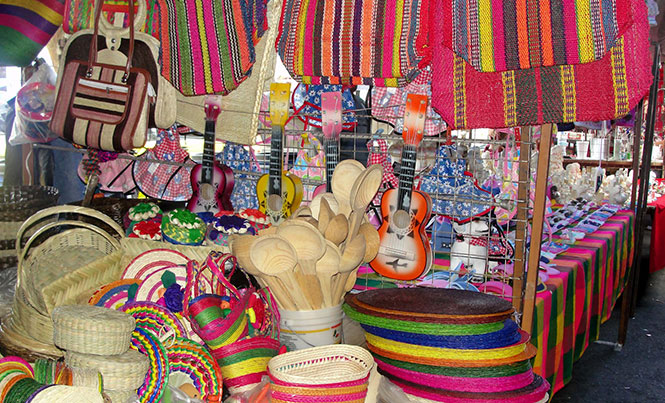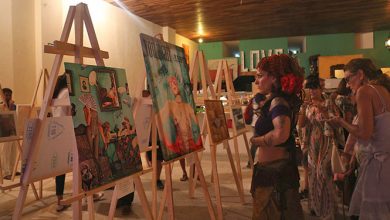Markets and Fairs: from Pre-Hispanic Mexico to Modern Times
In the first part of her series, Alejandra explores the pre-Hispanic markets of Mexico

Imagine arriving at an open air plaza, stopping a moment to observe the scene in front of you: people circulating among hundreds of stands with merchandise on the ground or on wooden tables, merchants offering their wares. People purchasing and bartering for items including fresh fruits and vegetables, grains, seeds, handcrafts and dolls made out of corn husks, clay pots and plates, cooking utensils, cloth, traditional clothing from different villages, delicious food and drink, edible insects, dogs, beautiful birds, chickens and hens. This is a typical day in the market in Chilapa, Guerrero.
 Now imagine all of this and add luxurious items like quetzal feathers, golden jewelry, slaves, xoloitzcuintle dogs, woven palm leaves, medicinal plants, honey, corn, beans, salt, a variety of chiles, flowers, natural dyes, shells, snails, fish, snakes, obsidian knives, animal skins and more. Imagine the smell of coffee, and in the background a group of judges watching over everything and making sure problems are solved. This is how a market was in the Pre-Hispanic Era.
Now imagine all of this and add luxurious items like quetzal feathers, golden jewelry, slaves, xoloitzcuintle dogs, woven palm leaves, medicinal plants, honey, corn, beans, salt, a variety of chiles, flowers, natural dyes, shells, snails, fish, snakes, obsidian knives, animal skins and more. Imagine the smell of coffee, and in the background a group of judges watching over everything and making sure problems are solved. This is how a market was in the Pre-Hispanic Era.
When they arrived in Aztec lands, the Spanish were very surprised, as Bernal Díaz del Castillo (a soldier of Hernán Cortés) related in his chronicles about the great market of Tlatelolco.
In Pre-Hispanic times, the currency used in the markets was cocoa (the biggest pieces), but precious jewels, cotton cloth, feathers, and copper could also be used to buy merchandise.
The most important markets were Xochicalco and Xochimilco where goods were sold at the floating market in canoes. This was not only in the state of Mexico, but also in Puebla and Monte Albán in Oaxaca, among others.
In the Maya region, the most important were the ones close to the coasts as the merchants were also sailors, among them Cozumel y Chichen Itzá.
Besides taking places weekly or bimonthly, the tianguis were also part of religious festivals.







